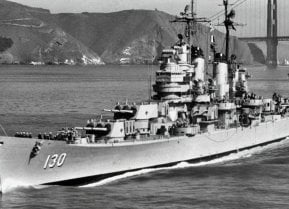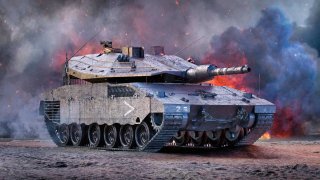Merkava: How Israel May Have Built the Deadliest Tank Ever
For now, the IDF has no reason to cease producing additional Merkava family variants. Considering the tank’s success in combat deployments, the Merkava will remain the backbone of Israel’s armored corps for years to come.
Meet the Merkava: Wars between Israel and its Arab neighbors have engulfed the Jewish state since its founding in 1948. From early on, the Israeli government understood that without a robust national security apparatus, the country would cease to exist. In its earlier years, the Jewish state relied on foreign actors to provide the weapons and equipment needed to defend its borders. However, changing geopolitical circumstances made depending on outside forces unsustainable.
For this reason, Israel turned inward and developed its domestic weapons manufacturing, which has culminated in some of the world’s most formidable military equipment to date.
Israel’s homegrown Merkava family of main battle tanks (MBTs) arguably represents the best of its indigenous efforts. Since its introduction to service more than four decades ago, the Merkava tank has remained a staple in the Israel Defense Force’s (IDF) armored corps.
Additionally, the Merkava’s proven track record in combat indicates the powerful tank isn’t going anywhere in the near future.
Introducing the Merkava Family of Tanks
In the 1960s, the IDF still relied largely on joint projects and weapons deliveries to build up its stockpile. During this time period, Israel was collaborating with the United Kingdom to develop a joint Chieftain MBT variant.
Ultimately, the UK backed out of the project and supplied its Chieftain tank to Arab countries instead. The Soviet Union also supplied Israel’s neighbors with weapons and military equipment during the Cold War, including its advanced armored vehicles.
On Yom Kippur in 1973, war would erupt that would alter the IDF’s logic surrounding MBTs for years to come. Egypt and Syria mounted a coordinated attack in the Sinai Peninsula and Golan Heights region equipped with the USSR’s modern tanks. Israel’s armored corps suffered greatly from its neighbors’ onslaught due in part to the lack of advanced MBTs. Following the Yom Kippur War, the IDF would prioritize advancing its tank capabilities to limit high casualty rates in future conflicts.
In short, the original Merkava was developed to protect its operators.The IDF installed thick-space armor and reversed the typical engine transmission position in order to provide extra protection for its crew. This design resulted in greater space in the MBT’s rear, which increased storage capacity and access to enemy fire for the tank’s operators.
The Merkava Has a Decorated Service History
The Merkava was first deployed during the 1982 Lebanon War, where these tanks effectively countered the USSR’s T-72 MBTs in the Bekaa Valley.
As explained by the Jerusalem Post, “In total, out of the 400 tanks in Lebanon, close to 50 were hit by the thousands of anti-tank Hizbullah missiles, and 22 were penetrated, leaving close to 30 crew members dead. According to one of the officers involved in the investigations, the Merkava tanks' protective elements were effective, and had the tanks been used correctly, the number of casualties would have been drastically reduced.”
Subsequent Merkava variants featured even greater protective measures. The Trophy Active Protection System was incorporated into the Merkava IV variants and defends MBTs against anti-tank missiles and rocket-propelled grenades.
Perhaps the most significant component of more recent Merkava variants, the Trophy system has saved countless lives in combat by enabling crew to identify and intercept incoming barrages. In fact, the Trophy’s impressive success rate has allowed the IDF’s armored corps to act more offensively on the battlefield.

In 2011, Trophy-fitted Merkavas were deployed to the border of Gaza following a flare-up in violence. In one instance, a recorded encounter highlighted the necessity of the defense system. Tank crew members detected a figure walking along the border.
Before they could react, “Suddenly, an alert went off, and a missile appears. The soldiers didn’t understand what had happened. They tell one another, ‘We’ve been fired on; we’re supposed to be dead.’ When you hear the dryness of the conversation and the insight of the soldiers as to what had just happened, it really gives one goosebumps.” In 2014, the Merkava IV also operated successfully during a seven week-long Gaza war with Hamas.

For now, the IDF has no reason to cease producing additional Merkava family variants. Considering the tank’s success in combat deployments, the Merkava will remain the backbone of Israel’s armored corps for years to come.
About the Author: Maya Carlin
Maya Carlin is an analyst with the Center for Security Policy and a former Anna Sobol Levy Fellow at IDC Herzliya in Israel. She has by-lines in many publications, including The National Interest, Jerusalem Post, and Times of Israel. You can follow her on Twitter: @MayaCarlin.
All images are Creative Commons.


